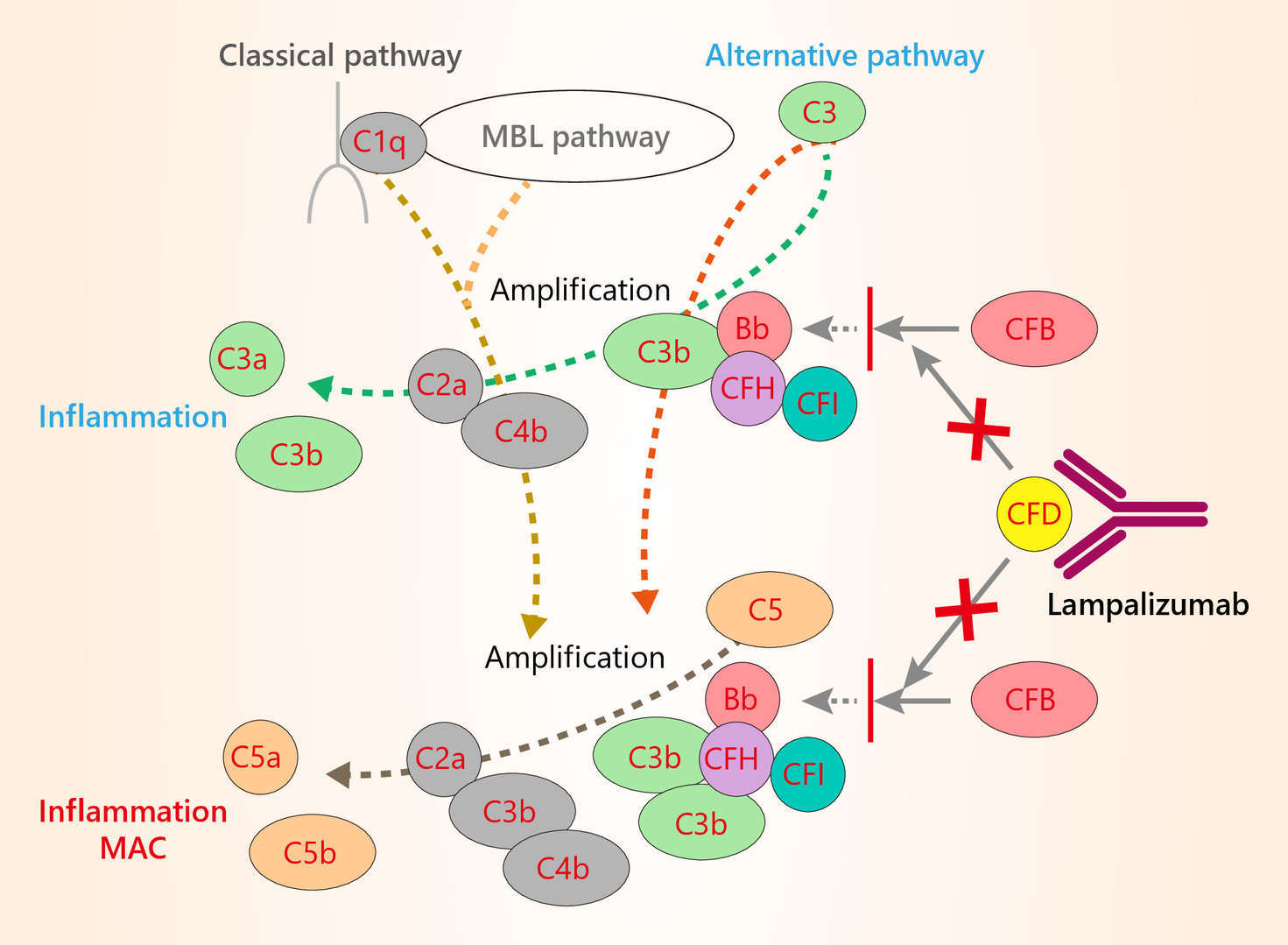Lampalizumab Overview
Introduction of Lampalizumab
Lampalizumab, previously referred to as FCFD4514S, is an antigen-binding fragment (Fab) of a humanized monoclonal antibody (mAb) that binds to complement factor D (CFD); it was developed as a potential treatment of geographic atrophy (atrophy of the retinal cells, retinal pigment epithelium, and choriocapillaris) secondary to age-related macular degeneration (AMD). One of the two Phase-III clinical trials (Spectri) was interrupted on September 8, 2017 due to failure to meet primary end point. The second Phase-III clinical trial (Chroma) also failed to meet its primary end point. These two failures have called into question whether complement inhibition is a sound strategy for geographic atrophy.
Mechanism of Action of Lampalizumab
Geographic atrophy (GA) is an advanced stage of age-related macular degeneration(AMD) and is characterized by the loss of retinal photoreceptors, retinal pigment epithelium (RPE), and choriocapillaris. Much of the advances in understanding of non-neovascular AMD have been in the realms of genetics and pathophysiology. While nongenetic factors such as age, diet, and smoking are known to play a role in the development of AMD, recently discovered genetic factors provide key insight into potential non-neovascular AMD treatments. It is theorized that 20 known AMD associated genes can explain 40%-60% of disease heritability. The genes with the largest share of genetic risk for AMD include CFH, C2/CFB, and ARMS2/HTRA1. The CFH gene codes for complement factor H (CFH), a key component in the alternative pathway which protects self-cells from destructive inflammation through the complement cascade. CFH regulates this inflammatory pathway, by inhibiting proinflammatory protein C3b. Polymorphisms identified in the CFH gene confer an increased risk of developing AMD. Three pathways are known to activate complement: the classical pathway, the mannose-binding pathway, and the alternative pathway. Factor D plays an integral role as the rate-limiting enzyme in the signaling cascade that activates the alternative pathway. Once cleaved, factor B, the substrate for factor D, is converted to the proteolytically active factor Bb, which then initiates the alternative pathway and activates other important proinflammatory convertases, such as C3 which initiates signal amplification to activate C5 convertase. Anti-complement factor D specifically inhibits the alternate pathway of complement activation by blocking factor D cleavage of factor B to factor Bb, while the classical and mannose-binding pathways remain intact, preserving innate immunity. Lampalizumab is a Fab of a humanized mAb directed against factor D, which is a key regulator of the alternate pathway of complement activation. By decreasing the concentration of factor D, it is theorized that there is decreased complement activation.
 Fig.1 Mechanism of action of lampalizumab
Fig.1 Mechanism of action of lampalizumab
For research use only. Not intended for any clinical use.
This site is protected by reCAPTCHA and the Google Privacy Policy and Terms of Service apply.



